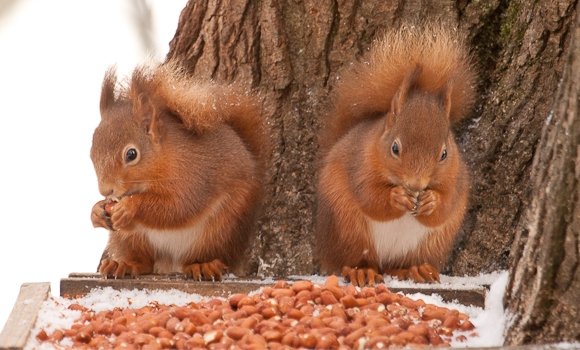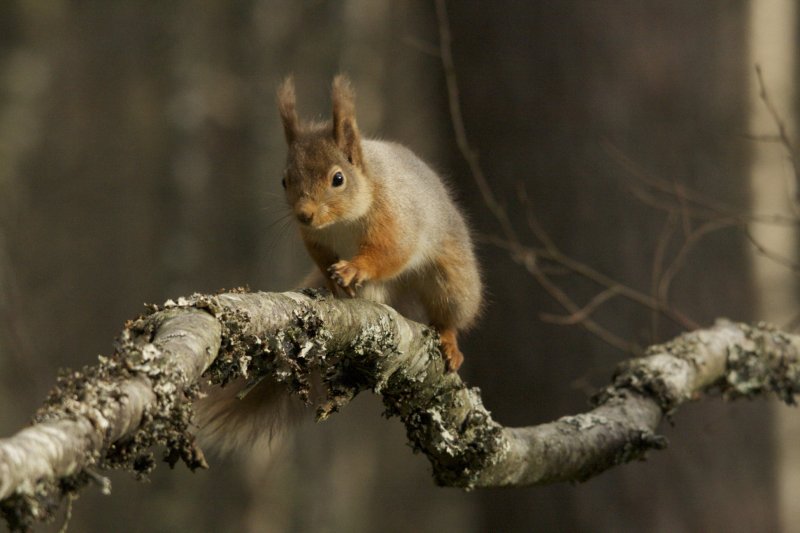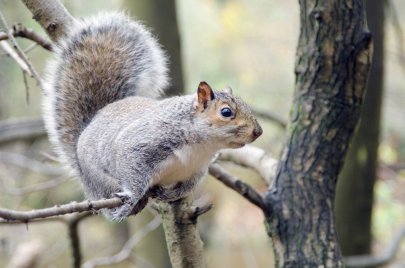Original Author: Steve Willis, Project Officer North-east Scotland
Winter is here! What does it all mean for red squirrels? The temperature is dropping all across Scotland and many parts of the country have had their first snow falls. How does this change in the season affect the red squirrel? Like us, they experience shorter days and much cooler temperatures.
Do they hide away and hibernate? NO!!! This seems to be a widely held belief. Ground squirrels in other parts of the world do hibernate, but can only do so if they build up huge fat reserves. Tree squirrels (like red and grey squirrels) cannot afford to build up a lot of weight and still scamper about the canopy, so they have to stay active all year round and keep on feeding!
Squirrelling away food…
All through late summer and autumn squirrels frantically scatter-horde food all over the woods. They will move from food supply to food supply and eat what they can, and bury the rest. They have a great memory for finding their caches and will use them from now right through until the spring.

Get yer coat…
Squirrels moult twice a year. In autumn the summer coat fills out and they prepare for winter. Any given squirrel can look a fair bit different in winter time- the coat can vary in colour from how they look in summer. Red squirrels can often show a silver, dare we say grey, colour in winter and this often leads to ‘false alarm’ reports of grey squirrels. Whilst we’re on about greys – a key feature of their coat- at any time of year- is a white halo to the tail.


Did someone say ‘ear tufts’?
Of course! We forgot the ear tufts! As the red squirrel’s winter coat grows in they also grow their dapper little ear tufts. A few keep their ear tufts all summer as well, but most lose them in the spring moult. The function of the ear tufts is not certain – but they certainly look fabulous.
Love is in the air…
Believe it or not the red squirrel breeding season is just around the corner! Mating may take place as early as mid December! If you see frantic high-speed chases in the canopy this might well be a female in the lead and a male in hot pursuit! Mating chases are amazing to watch – the speed they can dash about is incredible!
Time to spruce up the drey…
Spruce – ha ha! Pun intended! Come winter squirrels will spend some time on home maintenance. Dreys need to be cosy and weather-proof and any one individual may use more than one drey within it’s home range. Dreys may also be used by more than one squirrel! A dense bundle of sticks, lined inside with grass, moss, lichen, and fur- the dreys will be essential to surviving winter.
Squirrels will emerge from the drey at first light and head out to seek out food. Feeding activity peaks mid morning and then again later in early afternoon. Then, as the light begins to fade, the red squirrels make their way back to their favoured drey to settle down for the night.
